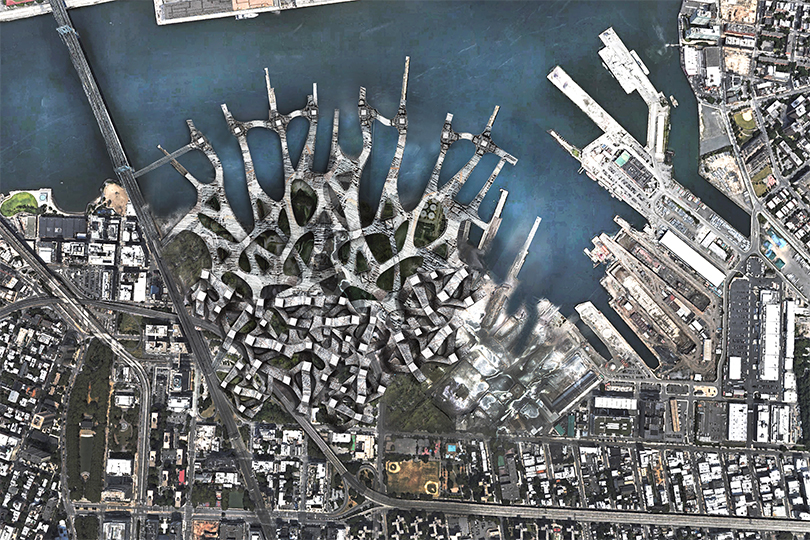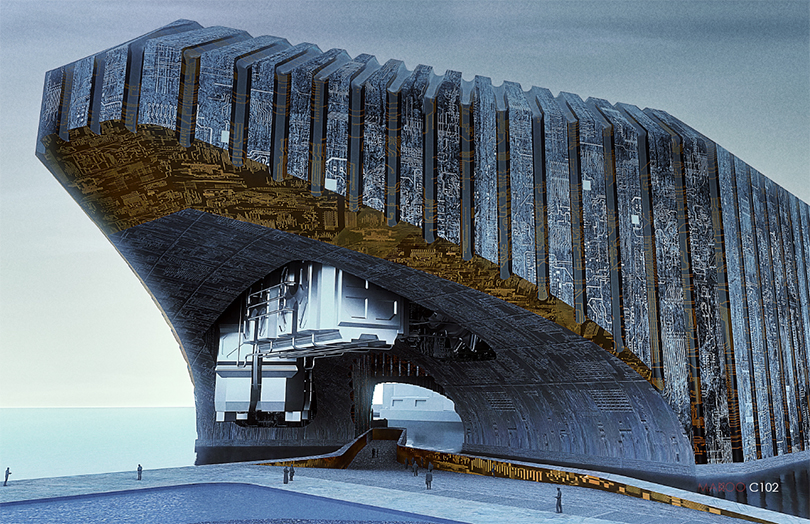
According to the United Nations, by 2050 urban areas are anticipated to hold 68 percent of Earth's population. As density is increasingly proposed as a solution to climate change, land use limitations, and other issues facing the world’s most populous cities, architects and designers are assessing how to facilitate this growth in a sustainable way.
Pratt’s Graduate Architecture and Urban Design (GAUD) department is a leader in preparing students to engage with the current and future densification of cities around the world. “As cities densify, a few assumptions about designing buildings in the 21st-century city change. For example, take a look at New York City and Hong Kong. They are building inward and on top of themselves, conserving their existing fabric, as opposed to growing outward in concentric circles,” says GAUD Chair David Erdman. “This is something unique in the history of cities and opens up opportunities that we highlight in the curriculum. For instance, our students will need to have ideas for working with existing buildings in new and creative ways when they graduate, such as tweaking existing structures through small interventions to give them new use and identity, or considering ways in which nature, recreation, and lifestyle could be reconfigured—something equally as important as the design of new, ‘ground-up’ buildings,” he explains.
Through its three programs—master of architecture, master of science in architecture, and master of science in urban design—GAUD is using its Pratt base in New York City to connect with the global concerns of vertically expanding, compact cities and their buildings. “The curriculum in all three programs requires students to develop skills in an interdisciplinary manner, foregrounding architectural design while balancing those methods and theories with related practices of conservation, landscape, interior and urban design,” Erdman says.
For example, as part of this spring’s Studio of Experiments, students are traveling to Hong Kong and Santiago, Chile, to consider issues of land use and housing capacity. Their work will involve dialogues with government officials, as well as discussions with fellow students at affiliated institutions. This travel follows and supplements the students’ inquiries into densification and affordable housing in New York City that were introduced in earlier parts of their curriculum. Although the studio course is structured as a series of “experiments” in design, each stage connects to broader questions in architecture and urban design.

The Studio of Experiments was launched in 2017 by GAUD as a final semester design research course for master of architecture students. Each session involves visiting faculty members who work directly with the students, with past advisors including Canadian graphic designer Bruce Mau, extreme climate and interactive environment architect Lindy Roy, and prefabricated material-oriented designer Débora Mesa Molina. Collaborating with these established practitioners, students address density challenges in the built environment.
GAUD’s Studio of Experiments is just one of its “directed research” studios and programs that delve into the pressing issues of future cities and their impact on the environment. Master of science in urban design students recently analyzed proposals for hyper-dense blocks in Brooklyn with a focus on Vinegar Hill and the Farragut Houses. Taking into account this area’s diverse mix of infrastructure and architecture, from the busy Brooklyn–Queens Expressway (BQE) to public housing, they reflected on its possible changes due to rising shorelines and increased population. Another core studio course had students working in teams on the complex design problem of building a better waste-to-energy plant, and making it a facility that people would actually want to live near (or even on). GAUD’s international offerings feature a Havana program, through which students have investigated mid-century architecture, built at a modernist-influenced moment of density design, and speculated on the Cuban city’s prospects for public space in future public-private developments along the recently “released” harbor front.
Each of these GAUD initiatives emphasizes interdisciplinary perspectives and interaction with stakeholders from a variety of fields. They stress how architects can be responsible participants in sustainable cities. While density can have negative connotations, with visions of ant hive-like skyscrapers and dehumanizing tangles of transportation infrastructure, the GAUD coursework explores its positive potential. If the extreme densification of cities is a necessary benefit to the environment in the coming 25-to-50 years as both the UN and Paris Agreement have suggested, then architects can help make these places inclusive, environmentally viable, and livable. In this context, GAUD students have examined waste management, underground parks, affordable housing, and other design issues that will have a tremendous impact on shaping the future city.
Images: (main image) Mais Abu Ali (MS.AUD ’18) in Jonas Coersmeier's studio. Proposal for highly dense pedestrian network and raised hyper-dense development in the DUMBO/Farragut Houses area. Aerial Plan; (inset) Kenith Mak and Wanlapa Koosakul (M.Arch ’19) in Alexandra Barker's studio. Proposal for a Waste to Energy Recycling Center and Constructivist Machine History museum in St. Petersburg, Russia. View of entry area.